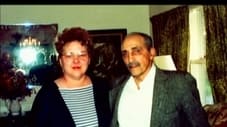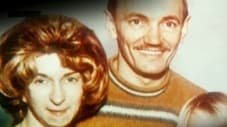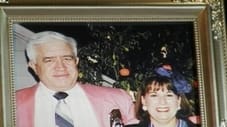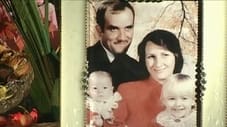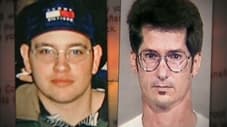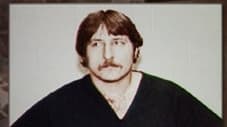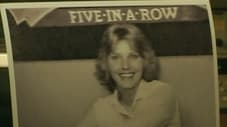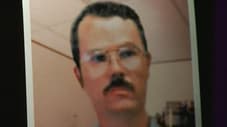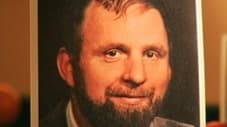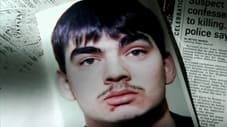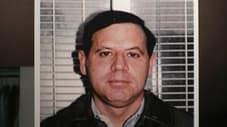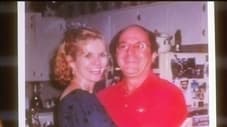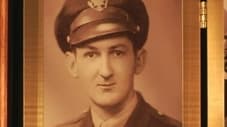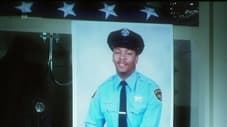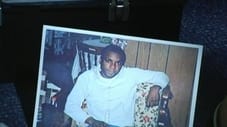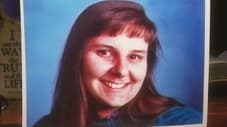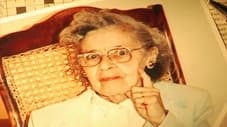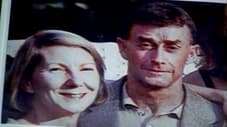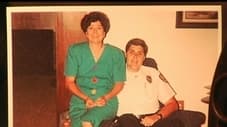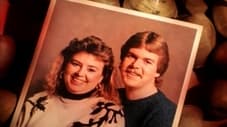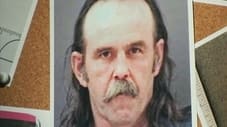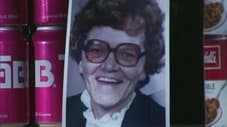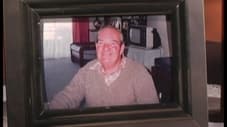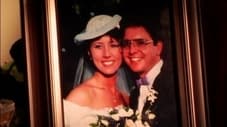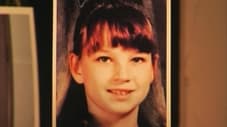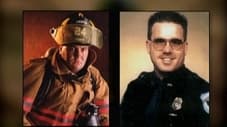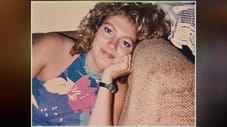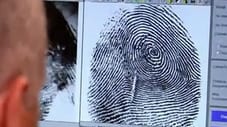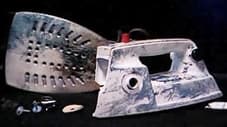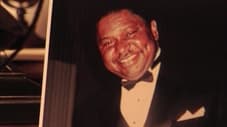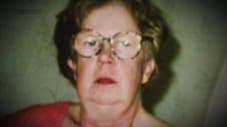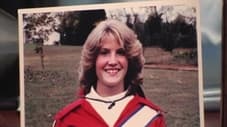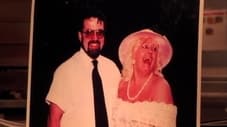
Forensic Files (1996)
← Back to main
Edward Hydock — Production Coordinator
Episodes 114
Trial by Fire
A house erupted in flames on a cold January night, killing one person and injuring another. The survivor blamed a kerosene heater but the evidence at the scene did not support her story, and she was charged with arson and murder. It would take a nationally known fire investigator to determine what happened, and who was responsible.
Read MoreMarked for Life
In 1957, California police searched for a man who had committed several crimes in one night – including murder, but after following thousands of leads, eventually, the case turns cold. Almost 50 years later, with advances in computer technology and handwriting analysis, investigators determine the killer.
Read MorePlastic Puzzle
A man riding a bicycle was fatally injured, the victim of a hit-and-run accident. Tiny clues found at the scene created a picture of the vehicle which struck him and led police to its driver.
Read MoreUp in Smoke
When an elderly couple died in a suspicious house fire, their son became the prime suspect. The son insisted he was innocent; he said he tried to extinguish the fire by pouring water on it, but that only made it worse. Investigators turned to forensic science to determine if the fire had been set deliberately, or if it was an unfortunate accident.
Read MoreSoiled Plan
A mother of two young children went missing and, less than a day later, her body was found. The evidence was little better than circumstantial, and the crime drifted to the bottom of the cold case files. Twenty years later, advances in technology enabled investigators to see the evidence in a new light, and discover it pointed directly to the killer.
Read MoreHeadquarters
When hunters reported finding a skull in a Texas canyon, police find bits of clothing, a woman's shoe, some small bones and a strand of hair. An anthropologist determined the victim was a Caucasian woman, and that she'd been stabbed repeatedly; a forensic artist reconstructed her face, the image was released to media and, eventually, police learned who she was. Now all they had to do was find her killer.
Read MoreOne for the Road
A married couple decided to escape the cold of winter with a mini-vacation in Key West. The wife went missing, and police searched every square inch of the island; they found nothing but a pair of sandals which might have belonged to her. Then two important pieces of video surfaced, and investigators began to wonder if they should be searching for a missing person or a killer.
Read MoreArmy of Evidence
A mother of two young children was found dead in her bedroom. It appeared she had killed herself: There were suicide notes near her body, and a pistol was in her hand. Her death was ruled a suicide – but when investigators learned she had almost died in a house fire three years earlier, they decided to take another look at the evidence.
Read MoreShear Luck
In 1991, when the wife of a serviceman was brutally murdered in the Philippines, the Air Force Office of Special Investigators swung into action. Clues led to the victim's husband, but he insisted he was innocent. To find out if he was telling the truth, investigators would have to do something unprecedented: Reassemble a 5-1/4 inch computer disk which had been cut to pieces with pinking shears.
Read MoreTagging a Suspect
Bombings are difficult to solve, because the perpetrator isn't usually at the scene, and the evidence goes up in smoke. But there are clues if investigators know where to look. In this case pieces of plastic the size of grains of sand, held the key to a man's murder.
Read MoreStrong Impressions
The wife of an Air Force officer was found dead in her bed, with a plastic laundry bag near her face. At first glance, it appeared she'd been doing laundry, fell asleep, rolled onto the bag, and suffocated. But further investigation proved that the scene had been staged. Her death wasn't an accident; it was cold-blooded murder.
Read MoreCereal Killer
When a fire destroyed most of a home and a young boy went missing, police organized the largest search in the history of their small town. First the boy's backpack was discovered five miles from home, and then his body was found 50 miles away. But the killer had been careless, and the evidence he left behind would lead police directly to him.
Read MoreCrash Course
A highway patrolman was dispatched to what he thought would be a routine traffic accident until he looked in the car. While he had no formal training in forensic science, he had seen hundreds of accidents – but never as much blood as this. He was shocked by the coroner's ruling of accidental death, and then an anonymous phone call breathed new life into his investigation.
Read MoreA Leg Up on Crime
The decomposed body of a young woman was discovered in a Bakersfield irrigation canal. If there was trace evidence, it had been washed away. Another victim was found in that same canal a year later; this time, the perpetrator had been careless. The shoe prints found at the scene would lead police to the most unlikely of killers.
Read MoreTight-Fitting Genes
A behavioral profile is helpful in a murder investigation, but it's not a road map to the killer. One such profile caused the Baton Rouge Police Department to search for the wrong man. They might not have made an arrest, had it not been for a DNA picture of the suspect, painted by a molecular biologist. [also marked as S10:E15]
Read MoreDeadly Valentine
An obstetrician returned home from the hospital and found his wife on the floor of the bathroom. She was covered with blood and not breathing. He tried unsuccessfully to revive her, staining his clothes with her blood in the process, and then he called 911. His version of events was not supported by the blood spatter evidence, and investigators had to determine why. [also marked as S10:E17]
Read MorePicture This
A Modesto, CA, teenager went missing. There was no sign of a struggle in her home, and police suspected she'd simply run away until her naked, bruised body was discovered in a ditch 20 miles away. [also marked as S7:E18]
Read MoreOily in the Morning
When police recovered the submerged car of a man reported missing, they expected to find his body – but it wasn't there. His broken eyeglasses were on the floor of the vehicle and the interior was coated with motor oil. The investigation which followed would uncover an obsession turned deadly, and the motive for murder. [also marked as S10:E19]
Read MoreGold Rush
Emergency dispatch received a call from a man who said his girlfriend shot and killed herself. Police found the victim in the caller's house, lying in a pool of blood with the gun next to her on the floor. The autopsy revealed that the gunshot wound was not self-inflicted and the evidence found on her body would give police a golden opportunity to catch her killer.
Read MoreFour on the Floor
A Native American woman was brutally killed in the desert of New Mexico, and the crime scene was rich in forensic evidence: tyre tracks, shoe impressions and even the murder weapons. The site was less than 10 miles from another crime scene where, two years earlier, a male Native American was beaten and stabbed to death. Police began to wonder: was a serial killer on the loose?
Read MoreWriter's Block
A brilliant young architect became ill and died just before she was to testify in a criminal trial. The autopsy revealed she'd been poisoned with arsenic; it was a slow and painful death, so suicide was unlikely. Investigators had to determine who among her family, friends and business associates had a motive for murder. [also marked as S7:E22]
Read MoreA Clean Getaway
An employee of a dry cleaner was raped and murdered in the store, and investigators thought themselves fortunate to have two eyewitnesses. Their descriptions were similar but not identical, and the prime suspect didn't come close to resembling that person. Police turned to forensic science for the answers they needed.
Read MorePrints Among Thieves
The murder of an eccentric millionaire was not entirely unexpected; he flaunted his wealth and cared little for personal security. The evidence at the crime seemed to indicate robbery, but investigators wondered if there was something more.
Read MoreUnholy Alliance
When a young woman disappeared, police feared she was the latest victim in a string of similar crimes but the MO wasn't quite right. A pair of bloody gloves, unique tire tracks, and ordinary grass and pine needles provided investigators with some extraordinary clues.
Read MoreSigned, Sealed & Delivered
Two men were convicted of intentionally shooting and killing a passenger in a moving car, their friend was granted immunity for testifying against them, and the case was closed. Then a bomb exploded in the family home of the state's witness, instantly killing his father. Investigators turned to forensic science, hoping to determine if this was an act of revenge and if there was a way to link the two deadly crimes.
Read MoreSummer Obsession
In an affluent suburb of Philadelphia, police were called to the scene of what appeared to be an accidental drowning. The investigation gradually focused on one person, a suspect who had more than a million reasons to want the victim dead.
Read MoreEnemy Within
Kansas City attorney Richard Armitage was brutally murdered in his office in broad daylight. The first prime suspect was Lou Campbell, who had previously threatened Armitage, but he was later cleared. Police turn their suspicions to Armitage's law partner Richard Buchli, who had very little success as a lawyer and was in debt for more than $250,000.
Read MoreElemental Clue
When two women from the same town were murdered in the same way, police feared a serial killer was on the loose. At first they thought the victims had nothing in common until they found tiny clues linking them to the same man.
Read MoreMoss, Not Grass
A young woman was found dead on a golf course in the Bahamas. The grass on that course was so distinctive, it had evidentiary value. The evidence led police to two suspects. Each blamed the other, and they had to find out who the killer was.
Read MoreMaterial Witness
A teenager went missing after an evening of horseback riding. Her body was found a month later, three miles from her home. The killer unknowingly left trace evidence behind – tiny but unmistakable clues which pointed to him and him alone.
Read MoreGarden of Evil
When a popular disc jockey was found murdered in a community garden, police swung into action. A sniffer dog and a blood spatter expert led police to the killer and he'd been much closer than they realized.
Read MoreSunday School Ambush
When a woman's husband was gunned down in his own garage by intruders, investigators worked tirelessly to find the assassins. But when they discovered that a wound sustained during the attack by the grieving widow may have been self-inflicted, they turned to science to help them unravel a twisted tale of lust, greed and deception.
Read MorePenchant for Poison
Three seemingly unrelated deaths proved to be serial murders. The killer had been careful – he used poison which had no taste or odor. Fortunately for investigators, it also had a unique chemical signature.
Read MoreBump in the Night
The crime scene was awash with blood. The victim had been brutally murdered as he slept in his own bed. There were no foreign fingerprints in his home, but investigators did find a shoe impression in the mud outside physical evidence they hoped would lead them to the killer.
Read MoreSole Searching
Now it's not only a fingerprint which can link a killer to a crime; a shoe print can be just as telling. Armed with little else, police hoped the shoe impressions found at a Lansing, MI crime scene would put their investigation of Audrey Nichols' murder back on track.
Read MoreMurder on the Menu
When the head chef of a historic Philadelphia restaurant was found dead, investigators interviewed the usual suspects: family, friends and coworkers. As they sifted through the evidence, police uncovered a chilling tale of debt and deceit.
Read MoreHot on the Trail
A serial arsonist was on the loose in Washington, DC. Each of the fires was started with the same type of incendiary device. The perpetrator was very careful and seemed to leave no evidence behind but there were clues in the ashes and it was up to forensic scientists to find them.
Read MoreHigh 'n Dry
When Genell Plude was found dead in her bathroom, the scene pointed to suicide. But a coroner's inquest and a unique application of forensic science gave investigators a different explanation for her death. It was a theory which, if true, could turn her husband Doug into the prime suspect.
Read MoreTo the Viktor
Three homicides on two continents looked like professional executions. Investigators on both sides of the Atlantic needed to find out if they were related and, if they were, who or what they had in common.
Read MoreWired for Disaster
A 29-year-old woman was killed instantly when a bomb exploded in her home. The device was so powerful that shrapnel was embedded in houses across the street. The bomber had not only knowledge and skill, but also a motive for murder.
Read MoreWood-be Killer
A killer tried to incinerate and destroy everything that could link him to his crime. But in doing so, he inadvertently created new forensic evidence, evidence which came to light with a technique never before used in a criminal investigation.
Read MoreNaughty or Nyce
The woman could have lost control of her SUV on the icy road, and plunged down an embankment into a shallow creek. But there were footprints in the snow leading away.
Read MoreGoing for Broke
A successful stockbroker told his wife he'd be working late, and when he didn't come home, she reported him missing. Investigators found his car a few blocks from his office and, two days later, proof that he had been murdered.
Read MoreJust Desserts
The prime suspect had a criminal record, and his driver's license was found at the scene of a brutal, double homicide. That physical evidence seemed damning, but it wasn't the only evidence. DNA extracted from a discarded spoon would point investigators in a different direction.
Read MoreSunday's Wake
When a little girl got sick and died, investigators were stumped. Was it an accident, an unexplained illness, or murder? Scientists would travel halfway around the world before finding the answer in two unlikely places: a shredded legal document and her mother's signature.
Read MoreShattered Dreams
A car was found in a drainage ditch and the bodies of a man and woman were inside; both had been shot to death. The car windows were broken and shattered glass should have been everywhere, but it wasn't. A fingertip torn from a latex glove would point investigators to both the crime scene and the killer.
Read MoreDockter Visit
A World War II veteran was found dead in his home, and the investigation ground to a halt when the prime suspect had a solid an alibi. But a lucky break led to a shady character who wore distinctive boots and had a sweet tooth.
Read MoreMurder, She Wrote
A woman who was known to have suffered from depression apparently took her own life. But her sister told police that, a year before her death, she said if anything were to happen to her, there was a note in the china cabinet. Investigators found the note and the killer.
Read MoreConcrete Alibi
An aspiring model turned up dead, and the prime suspect was her boyfriend. When he was eventually cleared, investigators had to dig deeper to find the perpetrator. With the help of a forensic geologist, they identified the most unlikely suspects.
Read MoreKey Evidence
When an off-duty policeman was shot dead, his fellow officers were determined to solve the crime. They needed clues to find the killer, and they discovered them in tiny fibres and an asthma inhaler.
Read MoreThe Gambler
One warm summer afternoon, the town of Verona, Wisconsin, faced its first triple homicide. To solve the case, investigators had to delve into the world of high rollers and offshore betting.
Read MoreWeakest Link
The body of a young girl was discovered on isolated farmland near Delano, California. She had no ID, but police found mailbox and house keys in the pocket of her jeans. With no other clues, they checked the mailboxes of every apartment building in Delano and their persistence paid off.
Read MoreCapitol Crimes
The driver said he couldn't have hit and killed a pedestrian on a Harrisburg street. The Jeep Grand Cherokee he was leasing around that time had been sold months ago to a buyer in another state. Police were able to find the vehicle. They impounded it, took it apart, and discovered evidence, which would tell them what really happened that night.
Read MoreUndertaken
The medical examiner ruled the death an accident, but the detectives investigating the case thought the evidence at the scene indicated otherwise. It would take three years, an exhumation and a second autopsy to determine who was right.
Read MoreDark Waters
When a hit-and-run boating accident caused the death of a popular young man, investigators faced the daunting task of searching for one boat among 1200 others. They asked anyone who had seen the accident to come forward. The man who responded did much more than witness the crash; he was a passenger in that other boat.
Read MoreNice Threads
A woman was found dead on the bedroom floor of her apartment. The crime scene yielded little of value, and investigators wondered if they would find enough evidence to make a case, much less catch a killer. But a bloodstained sheet and a breakthrough forensic technique enabled them to identify the murderer, and convince the jury of his guilt.
Read MoreGrave Danger
A young man was killed in a mysterious car crash, but the evidence at the scene led investigators to believe it was not an accident. Forensic science revealed what really happened, and the truth devastated three families.
Read MoreInternal Affair
When a woman went missing, friends and family were determined to find her. Their worst fears were confirmed weeks later when her body was discovered. Blood evidence and computer forensics helped investigators to catch the killer, and convince the jury of his guilt.
Read MoreA Case of the Flue
In 1993, 82-year-old Kathryn Bishop was found dead in her Pennsylvania home. The evidence at the scene indicated that the perpetrator had been running out of the house, not breaking into it. Tiny clues on the victim's body would tell police what happened that night, and who was responsible.
Read MoreNo Safe Place
A wealthy man and his wife were attacked by three men outside their luxurious Louisiana home. He was shot dead and she was forced to open their hidden safe. The woman could not describe the men because they wore masks. To solve the case, police would have to find out who knew about the concealed safe, and who would benefit from the crime.
Read MoreVan-ished
A twelve-year-old girl claimed she had been abducted and sexually assaulted. She recounted what happened in such a flat, unemotional voice that police found it difficult to believe her. Fibers on her clothing would prove she was telling the truth, and help police to find her attacker.
Read MoreA Novel Idea
In 2001, paramedics in Durham, NC received a frantic call from Michael Peterson who said his wife Kathleen had fallen down the stairs and that she was unconscious, but still breathing. When paramedics arrived, they could do little more than pronounce the woman dead. The number and volume of bloodstains at the scene was greater than usual and it was up to forensic scientists to find out why.
Read MoreChief Suspect
The wife of a respected police officer was murdered in her own home. The crime went unsolved for more than a decade, and then a newly formed Cold Case Unit took a fresh look at the evidence. A few seconds of a 911 call enabled them to determine not only who was responsible for the victim's death, but also the motive for her murder.
Read MoreWater Hazard
The victim had ingested a massive amount of cyanide. An unlikely clue – a flaw on a mailing envelope – exposed a murderer who was willing to kill innocent
Read MoreShell Game
They thought the fire would cover their crime. But one tiny clue, no bigger than a thumbtack, remained. It held all the information investigators needed to put a trio of cold-blooded killers behind bars.
Read MoreRing Him Up
In 1994, 19-year-old college co-ed Shannon Melendi disappeared while at Emory University in Atlanta. For ten years, her disappearance of remained a mystery, until new scientific testing cast a different light on someone who had been a suspect from the beginning.
Read MoreKiller Impression
In 1987, the death of Crystal Purcell was considered an accident. Then in 2001, Barbara Purcell called police to suggest that her estranged husband Willard had killed Crystal, who was her husband at the time of her death. Before that investigation could begin, Barbara was found dead in much the same manner as Crystal. Was this an unfortunate coincidence or the M.O. of a serial killer?
Read MoreIf I Were You
In 1994, Paul Gruber's daughter suspected something was wrong when she received birthday cards addressed from Gruber, on which the handwriting wasn't Gruber's. When she then learned virtually everything had been removed from her father's Sandpoint, ID home, she was sure of it. Even though she lived almost a thousand miles away, she took it upon herself to find out what happened and who was responsible.
Read MoreAs the Tide Turns
The woman was dead. The man had been shot four times but he survived. When the man's version of events was at variance with the evidence, investigators turned to forensic science, hoping to determine if this was a botched robbery, or cold-blooded murder.
Read MoreA Tight Leash
How did a stalker obtain the security system code for his victim's home? How did he steal her personal photographs? Police needed answers, and they found them in the most unlikely of places: the letters he wrote to frighten the victim and taunt those trying to protect her.
Read MoreMuffled Cries
After inspecting storm damage to a home in Tampa, FL, the insurance assessor simply disappeared. Thirty hours later, her body was found in a nearby river. But the killer had been careless, using a murder weapon so unique and leaving behind clues so blatant that police would have no trouble tracking him down.
Read MoreCritical Maneuver
When a hit-and-run accident claimed the life of a high school athlete, everyone in town mourned his passing. Finding the killer was a long shot at best, but investigators hoped tiny paint chips and pieces of plastic found at the scene would lead them to the person who was behind the wheel.
Read MoreSkirting the Evidence
In 1996, Shannon Sanderson goes the casino without her husband Robert and wins $5,000 at the Blackjack tables. Three hours later, she is abducted by a man driving a Chevy Beretta and a month later, she was found dead. The trail turned cold, until police got a call from a woman who suspected her husband, who had a criminal past.
Read MoreSmall Town Terror
In 1991, Grand Junction, Colorado is on edge after a series of deadly bombings which has killed 2 and injured one more and police race to find the culprit before he strikes again. Ultimately, it was the bombs themselves, along with the tools used to make them, which led investigators to the perpetrator.
Read MoreFresh Heir
Lives changed in the 20 years following an unsolved murder, and so did forensic science. In time, a high-powered microscope and DNA profiling revealed not only a clue no one had seen before but also the identity of the killer.
Read MoreTicker Tape
A lifelong resident of the tiny town of Lefroy, Tasmania was murdered outside his own home. Robbery appeared to be the motive, but with no suspects, the investigation came to a halt. Then the victim's autopsy turned the investigation into a landmark forensics case: the device intended to save his life proved to be the only witness to his death.
Read MoreStep by Step
When a wealthy socialite died after falling down the stairs, the eye witnesses said one thing and the evidence seemed to indicate another. To find out what really happened, investigators turned to forensic science, a physicist and an expert in accident reconstruction.
Read MoreBlanket of Evidence
In 1997, Kelly Eckart's car was found with her belongings still in it, after working the late shift in Franklin, Indiana. Days later, her body was found in an isolated ravine. Tiny clues told police a great deal about the killer: he would own a car with olive-colored carpeting, a white blanket and distinctive bullets made from wax, not lead.
Read MoreTwo in a Million
A millionaire and his family were executed in their own home. For three years, the murders went unsolved and then a 30-year-old box of ammunition and some fluorescent fibers revealed the ultimate betrayal.
Read MoreBitter Brew
It was one of the most brazen crimes of the 20th century. Adolph Coors, chairman of the Coors Brewing Company, was kidnapped and held for ransom prompting one of the most intense manhunts in United States history.
Read MoreMessage in a Bottle
For twelve years, the murder of a young woman went unsolved, but with the passage of time came the development of technology. Would a used tissue found at the crime scene give police the evidence they needed to crack the case and bring a killer to justice?
Read MoreSharper Image
When a young girl was found dead, police quickly arrested the most likely suspect. But cutting-edge technology from NASA enabled a forensic odontologist to prove the wrong man was behind bars. With the killer still on the loose, the investigation was far from over.
Read MoreInsulated Evidence
It's usually easy to determine how a criminal entered the crime scene. But in this case, it was far from clear. It looked like the killer vanished into thin air...and perhaps he had.
Read MoreCold Hearted
When a young fireman died from what appeared to be serious but undiagnosed heart disease, his family and friends were devastated but they had no proof of foul play. Then they learned that, six years earlier in a nearby town, a young police officer died in the same way. The men had one thing in common: at the time of their deaths, they were married to the same woman.
Read MoreWheel of Misfortune
Security cameras in a casino tracked a young woman's movements until shortly before she disappeared. She was never seen again, but through the evidence she left behind, she was able to tell investigators what happened to her and who was responsible.
Read MoreQuite a Spectacle
It was one of the most unusual cases in forensic history. Investigators had to find a way to solve a murder case with evidence which consisted of a squashed tomato found at the crime scene, and tiny, pinpoint reflections of light in a photograph. Would it be enough to catch a killer?
Read MoreTransaction Failed
When a dedicated, well-respected teacher disappeared, police had to determine if she'd gone on vacation without telling anyone, or if she was the victim of foul play. Investigators turned to forensic science, hoping to find the answers they needed.
Read MoreThe Day the Music Died
Seattle police had no suspects in the violent murder of post-grunge singer, Mia Zapata. More than a decade would pass before the evidence collected by an extraordinarily prescient medical examiner could be used by forensic scientists to identify the killer.
Read MoreSole Survivor
A Michigan State University grad student disappeared and was presumed dead. With the help of a professor of geological sciences, police hoped to get the "dirt" on her killer.
Read MoreInsignificant Others
How unlucky could one man be? His wife had taken her own life, and his college sweetheart had killed herself in much the same fashion fourteen years earlier. Investigators had to determine if this was a bizarre coincidence, or an attempt to get away with murder... twice.
Read MoreCatch 22
In 1996, 54-year-old Gayle Isleib was ambushed in her Manchester, Connecticut driveway and shot to death. During their investigation, police learned that her 25-year-old co-worker Tyrone Montgomery was in love with her and that she had spurned his advances. They now had to determine if love had turned into obsession... and a motive for murder.
Read MoreA Cinderella Story
The victim had been sexually assaulted and stabbed to death on the beach, just ten yards from the hotel where she was staying. A pair of men's tennis shoes was discovered near her body. Police were sure that if they found the man who fit the shoes, they would also find the man who committed the crime.
Read MoreScreen Pass
A 13-year-old girl went missing from her Colorado home, and the only evidence the kidnapper left behind was three fingerprints on a window screen. Two years later, a latent print examiner, new to the county and the crime lab, changed the course of the investigation by sharing a little-known fact with his colleagues.
Read MorePressed for Crime
A brutal murder, lots of suspects, and conflicting evidence but the forensics were clear on one thing - the killer knew his victim and that alone gave investigators a head start.
Read MoreFinger Pane
A serial killer was on the loose and police had to find him before he struck again. Their most promising lead was an unusual one: a bloody fingerprint on the body of one of the victims.
Read MoreGood as Gold
On Halloween night 2004, Adriane Insogna and Leslie Mazzara were brutally murdered in their Napa, CA, home. The killer was not seen by their downstairs roommate, but he left his DNA behind in some cigarette butts and a groundbreaking test revealed his race and even the color of his eyes and hair.
Read MoreYes, in Deed
In a tragic twist of fate, just days after the woman sold her home and moved to a modest trailer, a fire took both the trailer and her life. But the autopsy proved this was no accident. It was arson and murder. Investigators had to determine who wanted the woman dead... and why.
Read MoreSmoking Out a Killer
A college senior was found raped and murdered near an unpaved footpath used by students to walk from one side of campus to the other. Five years earlier, a student was assaulted and killed in her off-campus apartment and, a year after that, another student was killed in almost the same way. Police feared a serial killer was on the loose and they needed to determine what – or who – these women had in common.
Read MoreDog Day Afternoon
A woman was brutally murdered in her home, and the only witnesses to the crime were the family dogs. An expert in canine behavior was convinced the killer knew both the victim and the animals, and he was determined find out exactly what the dogs had seen.
Read MoreShattered Innocence
The killer probably hoped to cover his tracks by staging the crime scene. But investigators saw through the attempt almost immediately, and they turned to forensic science to learn what really happened that night. [also marked as S12:E19]
Read MoreAll Butt Certain
A 6-year-old girl ran and hid when she saw her grandmother being beaten to death, but the man followed her, beat her and assaulted her. The girl said he was her Uncle Clarence, and he was convicted because of her identification. She recanted her testimony years later, but the court denied Clarence's petition for a new trial. His wife was convinced he was innocent, and decided to conduct her own investigation to prove it.
Read MoreJean Pool
In 1984, the body of college co-ed Laura Salmon was found on a Georgia farm, covered with her own denim jeans as well as the jeans of the killer. Investigators had plenty of suspects, including former boyfriend David Kyle Gilley, but no conclusive evidence linking any of them to the crime. More than a decade later, sophisticated technology would breathe new life into a case grown cold with the passage of time and implicate her killer.
Read MoreTraffic Violations
The body of an attractive young woman was found a mile from her abandoned car. Police were especially concerned when they realised the victim had come to them for protection just two weeks earlier, after a road rage incident. Concern turned to dread when the evidence began to point not to an aggressive driver, but to one of their fellow police officers.
Read MoreBrotherly Love
In 1969, 25-year-old phone operator Diane Maxwell is raped and murdered by a black man. Her brother promised he'd find out who was responsible and bring the killer to justice. It would take more than thirty years, but the young man kept his promise and, in doing so, brought closure to his family.
Read MoreDisrobed
The crime scene was especially violent: A husband and wife had been shot to death in their bedroom. At first, investigators thought their 16-year-old daughter was lucky to have escaped unharmed... but after a while, they wondered if the reason she was alive had more to do with careful planning than good fortune.
Read MoreFreedom Fighter
After the suspect was convicted of arson and murder, he steadfastly maintained he did not commit the crimes, but he was sentenced to a minimum of 25 years in prison. He had no money, no lawyer and only a fifth grade education, but he never gave up. He turned to the law books in the prison library and television programs about forensic science, and set out to prove his innocence. [also marked as S12:25]
Read MoreDriven to Silence
A young, attractive hairdresser was sexually assaulted and murdered in her own beauty salon. The evidence at the crime scene didn't match any of the suspects and, after the initial investigation, the case went cold for ten years. Then a witness who had been silent for more than a decade decided to do the right thing.
Read MorePrinted Proof
When two women went missing and were later found brutally murdered, police wondered if they were victims of a hate crime; the women lived together and were politically active, outspoken advocates of gay rights. But the motive turned out to be something age old, something with which investigators were all too familiar: greed, fueled by obsession.
Read MoreAbout Face
A human skeleton was discovered in the North Carolina marshlands and, when investigators learned she'd been dead for 18 months, they knew it would be difficult to find out who she was, much less who killed her. A forensic anthropologist was able to determine the victim's race, age and height, but it would take an inventive computer consultant to give her a face and a name.
Read MoreIn the Bag
After shooting his victims in the head, the killer staged the scene, placed the incriminating evidence into a plastic bag and tossed it into the river. Instead of floating downstream, it became entangled in overhanging branches. Days later, when police found it, they hoped clues to the killer's identity and the solution to the crime were "in the bag."
Read MoreGuarded Secrets
A security guard disappeared from his post without a trace; his remains were found a year later in a remote camp site. More than a decade would pass before a phone call breathed life into the cold case, and a paint smear on the bottom of the victim's boot helped scientists determine what happened during the last hour of his life.
Read More


